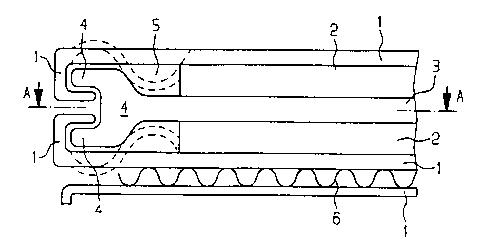Some of the information on this Web page has been provided by external sources. The Government of Canada is not responsible for the accuracy, reliability or currency of the information supplied by external sources. Users wishing to rely upon this information should consult directly with the source of the information. Content provided by external sources is not subject to official languages, privacy and accessibility requirements.
Any discrepancies in the text and image of the Claims and Abstract are due to differing posting times. Text of the Claims and Abstract are posted:
| (12) Patent Application: | (11) CA 2359733 |
|---|---|
| (54) English Title: | PEM FUEL CELL AND PROCESS FOR ITS PRODUCTION |
| (54) French Title: | PILE A COMBUSTIBLE ET PROCEDE DE FABRICATION DE LADITE PILE |
| Status: | Deemed Abandoned and Beyond the Period of Reinstatement - Pending Response to Notice of Disregarded Communication |
| (51) International Patent Classification (IPC): |
|
|---|---|
| (72) Inventors : |
|
| (73) Owners : |
|
| (71) Applicants : |
|
| (74) Agent: | SMART & BIGGAR LP |
| (74) Associate agent: | |
| (45) Issued: | |
| (86) PCT Filing Date: | 2000-01-11 |
| (87) Open to Public Inspection: | 2000-08-03 |
| Availability of licence: | N/A |
| Dedicated to the Public: | N/A |
| (25) Language of filing: | English |
| Patent Cooperation Treaty (PCT): | Yes |
|---|---|
| (86) PCT Filing Number: | PCT/DE2000/000076 |
| (87) International Publication Number: | WO 2000045454 |
| (85) National Entry: | 2001-07-26 |
| (30) Application Priority Data: | ||||||
|---|---|---|---|---|---|---|
|
The invention relates to a PEM fuel cell and to a method for producing said
cell, wherein assembly of the fuel cell is effected by joining the edges (4)
of the membrane (3) and the pole plates (1).
L'invention concerne une pile à combustible à membrane électrolytique polymère et un procédé de fabrication dans lequel l'assemblage de la pile à combustible consiste à emboîter les extrémités (4) de la membrane (3) dans les extrémités des plaques polaires (1).
Note: Claims are shown in the official language in which they were submitted.
Note: Descriptions are shown in the official language in which they were submitted.

2024-08-01:As part of the Next Generation Patents (NGP) transition, the Canadian Patents Database (CPD) now contains a more detailed Event History, which replicates the Event Log of our new back-office solution.
Please note that "Inactive:" events refers to events no longer in use in our new back-office solution.
For a clearer understanding of the status of the application/patent presented on this page, the site Disclaimer , as well as the definitions for Patent , Event History , Maintenance Fee and Payment History should be consulted.
| Description | Date |
|---|---|
| Inactive: IPC expired | 2016-01-01 |
| Inactive: IPC expired | 2016-01-01 |
| Inactive: IPC expired | 2016-01-01 |
| Time Limit for Reversal Expired | 2006-01-11 |
| Application Not Reinstated by Deadline | 2006-01-11 |
| Deemed Abandoned - Failure to Respond to Maintenance Fee Notice | 2005-01-11 |
| Inactive: Abandon-RFE+Late fee unpaid-Correspondence sent | 2005-01-11 |
| Inactive: Cover page published | 2001-11-23 |
| Letter Sent | 2001-11-14 |
| Inactive: Notice - National entry - No RFE | 2001-11-14 |
| Inactive: First IPC assigned | 2001-11-14 |
| Application Received - PCT | 2001-11-05 |
| Application Published (Open to Public Inspection) | 2000-08-03 |
| Abandonment Date | Reason | Reinstatement Date |
|---|---|---|
| 2005-01-11 |
The last payment was received on 2003-12-09
Note : If the full payment has not been received on or before the date indicated, a further fee may be required which may be one of the following
Please refer to the CIPO Patent Fees web page to see all current fee amounts.
| Fee Type | Anniversary Year | Due Date | Paid Date |
|---|---|---|---|
| Registration of a document | 2001-07-26 | ||
| Basic national fee - standard | 2001-07-26 | ||
| MF (application, 2nd anniv.) - standard | 02 | 2002-01-11 | 2001-12-13 |
| MF (application, 3rd anniv.) - standard | 03 | 2003-01-13 | 2002-12-11 |
| MF (application, 4th anniv.) - standard | 04 | 2004-01-12 | 2003-12-09 |
Note: Records showing the ownership history in alphabetical order.
| Current Owners on Record |
|---|
| SIEMENS AKTIENGESELLSCHAFT |
| Past Owners on Record |
|---|
| DIETER BRUCKNER |
| WOLFGANG KLOKE |